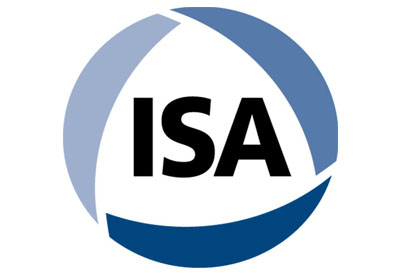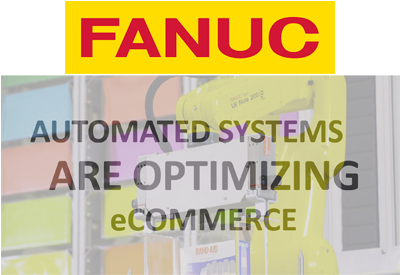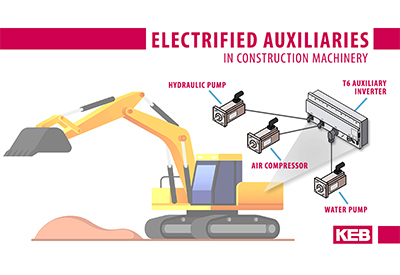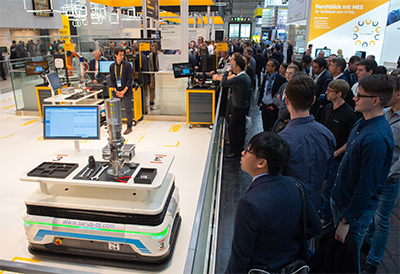Intelligent XTS Transport System Sorts Bottles With Automatic Format Changeovers
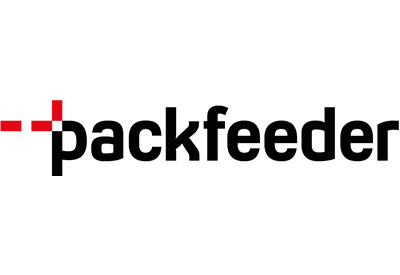
July 20, 2021
Spanish company Packfeeder has developed a family of automatic, robot-supported bottle unscrambling machines for the packaging industry. The so-called Pickfeeder uses the eXtended Transport System (XTS) from Beckhoff to implement a machine concept that is highly flexible and suitable for the most demanding sorting jobs in packaging with virtually no changeover effort.
Headquartered in Barcelona with global presence and service, Packfeeder specializes in systems for unscrambling and positioning bottle-shaped containers. Such machines are frequently used in the cosmetics, pharmaceuticals, food, household cleaner and chemicals industries where products must be filled into bottles. Since its foundation in 2002 by Tomàs Mulet, Packfeeder has focused on innovative machine concepts with considerable added value for end users. A good example of this approach is the new bottle sorting system that was developed with help from Beckhoff, as Packfeeder CEO Ferran Martínez explains: “Having innovation as a basic objective requires technology partners that share our vision, which is one of the reasons why we are working with Beckhoff to master such a technological challenge.”
By leveraging the highly flexible XTS, the new Pickfeeder family of machines can sort bottles of various materials and vastly different sizes and shapes without mechanical modifications to the production line. The use of XTS in combination with delta robots eliminates the need for specially shaped parts that are normally needed for each individual bottle in a standard machine and enables the Pickfeeder’s automatic changeover functionality.
Integrated systems deliver high process efficiency
Depending on the performance requirements, the Pickfeeder bottle unscrambler can be configured with up to four delta robots for a broad spectrum of sorting applications. The combination of four-axis delta robots with the intelligent XTS transport system from Beckhoff makes the bottle unscrambler an extremely versatile machine that features optimized throughput and a very gentle transfer to the exit conveyor in addition to automatic format switching.
The machine’s most important innovation, says Ferran Martínez, is the separation of the infeed area where bottles arrive lying down from the outfeed area where bottles are placed upright on the exit conveyor. This separation was made possible by the XTS as a central machine component: “Conventional systems perform both of these steps with robots. Using the delta robots only to grab the prone bottles, on the other hand, allows us to use smaller and less expensive robots while still exploiting their speed to the fullest. XTS is the ideal solution for accepting the bottles from the robots and handing them over upright and perfectly synchronized to the conveyor for transfer to the next machine. This prevents bottles from being positioned incorrectly or tipping over. Another benefit is the ability of XTS to be mounted in a slanted position, which makes the system particularly compact and straightforward.”
On the Pickfeeder machines, the flexible XTS employs the GFX guide rail from HepcoMotion and a Packfeeder-developed gripper. This innovative combination of technologies forms a universal solution that can handle a broad range of containers irrespective of their shape, material, color and fragility. In addition, any format changes within the filling line are easily handled via the multi-touch control panel. According to Packfeeder, this capability represents a huge advantage over mechanical unscrambling systems, which require several components to be switched out for each format change.
Focus on flexibility is key
While increasing the operating speed of each robot was an important objective of the development project, the main focus was on the ability to switch formats automatically. “The daily operations of our partners and customers demand maximum machine flexibility in order to accommodate the endless container variations in terms of geometries, colors, materials, textures and refinements,” Ferran Martínez explains. “The successful launch of the Pickfeeder series has met the expectations of our customers with the additional benefit of optimizing the relationship between throughput rate and floor space requirements.” For example, the Pickfeeder Single 100, the smallest model with only a single robot, achieves an output rate of more than 120 bottles per minute. That’s a great improvement over conventional systems with 70 to 80 bottles per minute, says Martínez.
Industrial needs are changing so rapidly these days that no one can ignore concepts like Industrie 4.0, support of lot size 1 or setup changeover times approaching zero. “The Pickfeeder series was developed from the start with these requirements in mind, and the intelligent XTS transport system made it possible for these concepts to become reality,” says Ferran Martínez. “This successful combination has expanded the capabilities of Packfeeder’s bottle unscrambling technology considerably. We haven’t been able to achieve such a major increase in a machine’s efficiency and flexibility in a long time.” Lluís Moreno, sales engineer at Beckhoff Spain, adds: “Packfeeder appreciated from the start the flexibility of the XTS and the benefits of PC-based control for the entire machine. We foresaw their huge potential for Packfeeder’s bottle unscramblers in our first meeting. It was our clear goal to close this gap that existed in the packaging market with a machine that could unscramble random bottle sizes and shapes with exceptional flexibility.”




